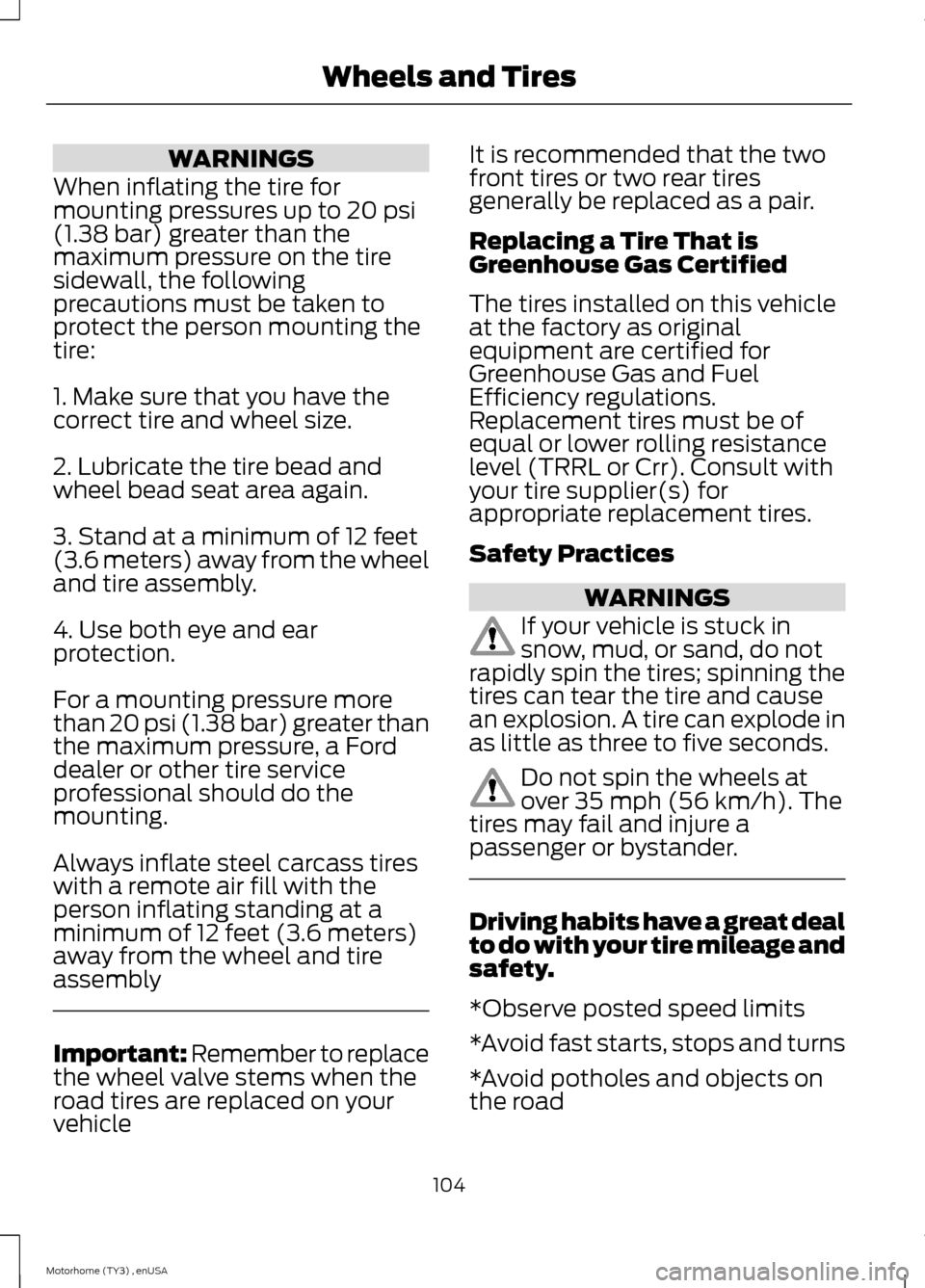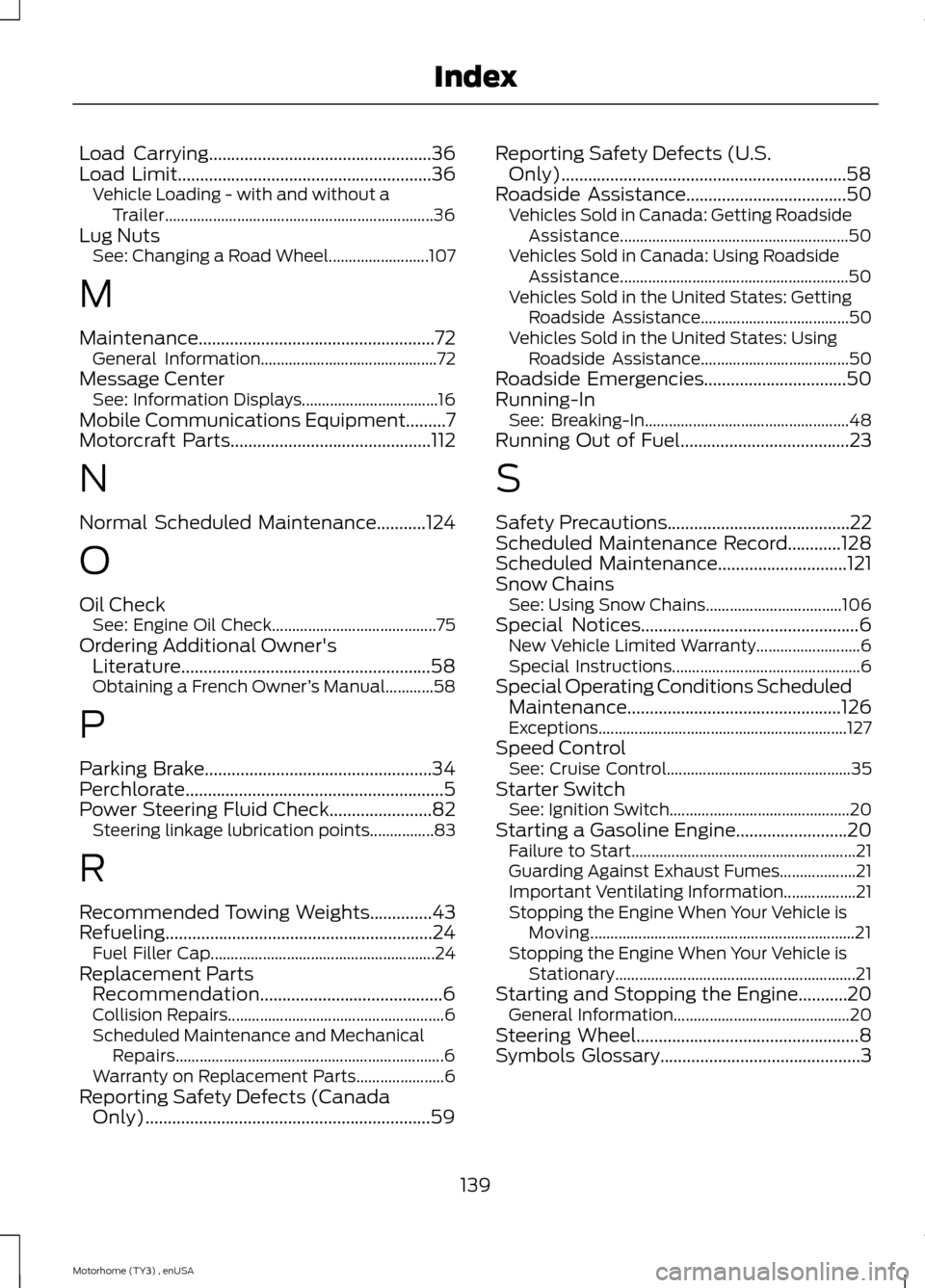Page 88 of 143

•The transmission must relearn itsadaptive strategy. As a result of this,the transmission may shift firmly. Thisoperation is considered normal and willnot affect function or durability of thetransmission. Over time the adaptivelearning process will fully updatetransmission operation to its optimumshift feel.
•The clock and the preset radio stationsmust be reset once the battery isreconnected.
•Your vehicle’s engine is electronicallycontrolled by a computer, some controlconditions are maintained by powerfrom the battery, the engine mustrelearn its idle and fuel trim strategy.
When the battery is disconnected or a newbattery is installed, begin the batteryrelearn process:
1.With the vehicle at a complete stop,set the parking brake.
2.Put the gearshift lever in P (Park), turnoff all accessories and start the engine.
3.Run the engine until it reaches normaloperating temperature.
4.Allow the engine to idle for at least oneminute.
5.Turn the A/C on and allow the engineto idle for at least one minute.
6.Drive the vehicle to complete therelearning process.
•The vehicle may need to be drivento relearn the idle and fuel trimstrategy.
CHANGING THE ENGINE AIR
FILTER
WARNING
To reduce the risk of vehicle damageand personal burn injuries, do notstart your engine with the air cleanerremoved and do not remove it while theengine is running.
Change the air filter element at the properinterval. See Scheduled Maintenance(page 121).
When changing the air filter element, useonly the air filter element listed. SeeCapacities and Specifications (page111).
Note:Failure to use the correct air filterelement may result in severe enginedamage. The customer warranty may bevoid for any damage to the engine if thecorrect air filter element is not used.
1.Loosen the latches that secure the airfilter cover in place.
2.Carefully separate the two halves ofthe air filter housing.
3.Remove the air filter element from thehousing.
4.Wipe any dirt or debris from the air filterhousing and cover.
85Motorhome (TY3) , enUSAMaintenanceE161559
Page 107 of 143

WARNINGS
When inflating the tire formounting pressures up to 20 psi(1.38 bar) greater than themaximum pressure on the tiresidewall, the followingprecautions must be taken toprotect the person mounting thetire:
1. Make sure that you have thecorrect tire and wheel size.
2. Lubricate the tire bead andwheel bead seat area again.
3. Stand at a minimum of 12 feet(3.6 meters) away from the wheeland tire assembly.
4. Use both eye and earprotection.
For a mounting pressure morethan 20 psi (1.38 bar) greater thanthe maximum pressure, a Forddealer or other tire serviceprofessional should do themounting.
Always inflate steel carcass tireswith a remote air fill with theperson inflating standing at aminimum of 12 feet (3.6 meters)away from the wheel and tireassembly
Important: Remember to replacethe wheel valve stems when the
road tires are replaced on yourvehicle
It is recommended that the twofront tires or two rear tiresgenerally be replaced as a pair.
Replacing a Tire That isGreenhouse Gas Certified
The tires installed on this vehicleat the factory as originalequipment are certified forGreenhouse Gas and FuelEfficiency regulations.Replacement tires must be ofequal or lower rolling resistancelevel (TRRL or Crr). Consult withyour tire supplier(s) forappropriate replacement tires.
Safety Practices
WARNINGS
If your vehicle is stuck in
snow, mud, or sand, do notrapidly spin the tires; spinning thetires can tear the tire and causean explosion. A tire can explode inas little as three to five seconds.
Do not spin the wheels atover 35 mph (56 km/h). Thetires may fail and injure apassenger or bystander.
Driving habits have a great dealto do with your tire mileage andsafety.
*Observe posted speed limits
*Avoid fast starts, stops and turns
*Avoid potholes and objects onthe road
104Motorhome (TY3) , enUSAWheels and Tires
Page 142 of 143

Load Carrying..................................................36Load Limit.........................................................36Vehicle Loading - with and without aTrailer...................................................................36Lug NutsSee: Changing a Road Wheel.........................107
M
Maintenance.....................................................72General Information............................................72Message CenterSee: Information Displays..................................16Mobile Communications Equipment.........7Motorcraft Parts.............................................112
N
Normal Scheduled Maintenance...........124
O
Oil CheckSee: Engine Oil Check.........................................75Ordering Additional Owner'sLiterature........................................................58Obtaining a French Owner’s Manual............58
P
Parking Brake...................................................34Perchlorate..........................................................5Power Steering Fluid Check.......................82Steering linkage lubrication points................83
R
Recommended Towing Weights..............43Refueling............................................................24Fuel Filler Cap........................................................24Replacement PartsRecommendation.........................................6Collision Repairs......................................................6Scheduled Maintenance and MechanicalRepairs...................................................................6Warranty on Replacement Parts......................6Reporting Safety Defects (CanadaOnly)................................................................59
Reporting Safety Defects (U.S.Only)................................................................58Roadside Assistance....................................50Vehicles Sold in Canada: Getting RoadsideAssistance.........................................................50Vehicles Sold in Canada: Using RoadsideAssistance.........................................................50Vehicles Sold in the United States: GettingRoadside Assistance.....................................50Vehicles Sold in the United States: UsingRoadside Assistance.....................................50Roadside Emergencies................................50Running-InSee: Breaking-In...................................................48Running Out of Fuel......................................23
S
Safety Precautions.........................................22Scheduled Maintenance Record............128Scheduled Maintenance.............................121Snow ChainsSee: Using Snow Chains..................................106Special Notices.................................................6New Vehicle Limited Warranty..........................6Special Instructions...............................................6Special Operating Conditions ScheduledMaintenance................................................126Exceptions..............................................................127Speed ControlSee: Cruise Control..............................................35Starter SwitchSee: Ignition Switch.............................................20Starting a Gasoline Engine.........................20Failure to Start........................................................21Guarding Against Exhaust Fumes...................21Important Ventilating Information..................21Stopping the Engine When Your Vehicle isMoving..................................................................21Stopping the Engine When Your Vehicle isStationary............................................................21Starting and Stopping the Engine...........20General Information............................................20Steering Wheel..................................................8Symbols Glossary.............................................3
139Motorhome (TY3) , enUSAIndex